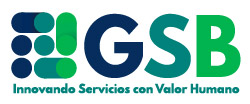 Some realities are part of our time:
Some realities are part of our time:
- Constant innovation and change that increasingly require collaboration between disciplines and geographically distributed experts.
- Relocation of work teams
- Collaborative work applications on mobile and fixed devices
- On-line communication facilities (synchronous and asynchronous)
- Climate change that invites us to reduce travel and paper
- Flexibility and autonomy in the management of time and work schedules
- Among others, such as the coronavirus ?
We are learning to get the most out of digital in favor of team performanceThe challenge is to make use of digital communication media and collaborative tools to keep their common objectives and goals aligned with the business, strengthen their autonomy and multidisciplinarity, as well as develop in a work environment of trust and commitment that favors continuous improvement.
We want to take advantage of the benefits of teamwork that drives Agile and its frameworks, and enjoy the facilities provided by new technologies to facilitate communications, team interactions and collaborative work, making distance not a barrier to enhance the development of agile teams.
On the other hand, the advantages of face-to-face communication are undeniable, as it facilitates an exchange of energy that enhances the communicative experience, allows us to see non-verbal cues and promote an inclusive dialogue that improves participation, involvement and the chances of sustaining commitment. Let us recall principle 6 of the agile manifesto: The most efficient and effective method of communicating information to the development team and among its members is face-to-face conversation.
I am going to share with you a term brought from the education area: Blended learning, which refers to learning that combines e-learning (online studies) with synchronous face-to-face meetings in physical spaces (face-to-face), taking the advantages of both learning styles.
In my opinion, as far as possible, let’s promote the Blended Working, using the best of teleworking, supporting teams with state-of-the-art digital technologies to manage their communications, interactions and collaborative work, and the physical world with dynamics that reinforce socialization, empathy and commitment.
And in your opinion and experience, what working style do you prefer in your work teams?
María Esther Remedios
@soy.agile.coach




